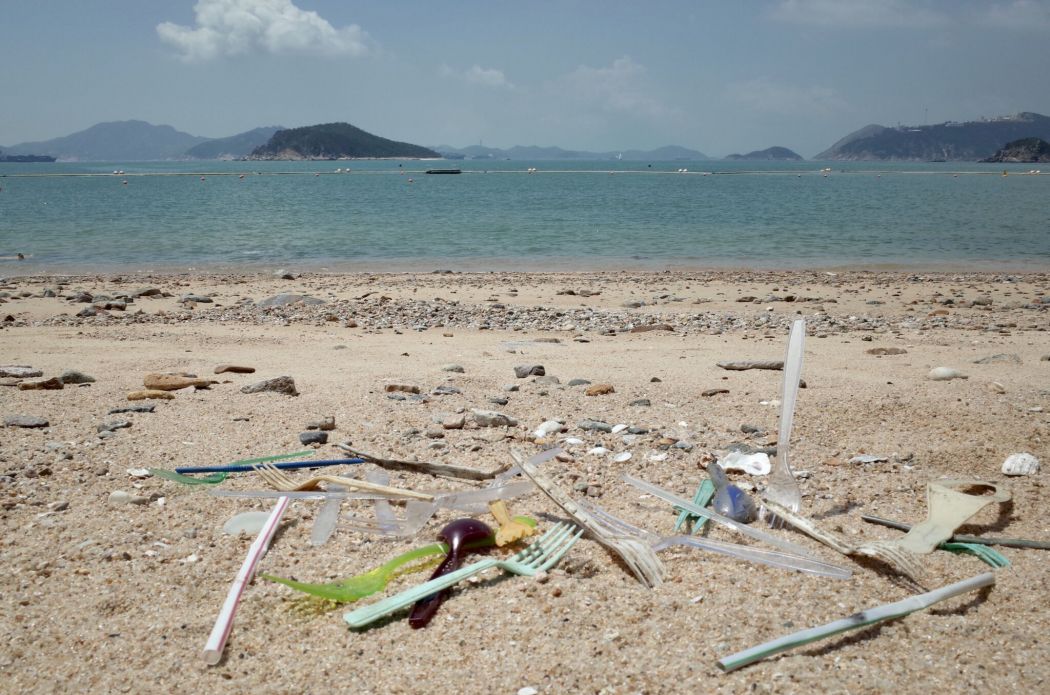Greenpeace has estimated that 17.5 million pieces of plastic enter into the sea from the Shing Mun River in Sha Tin each year.
It urged the fast food industry to end its use of single-use plastic, in particular Café de Coral and Fairwood, two of the biggest local fast food chains in Hong Kong. The former said on Thursday that it will stop providing plastic straws to customers from next year unless requested.

The green group conducted on-site surveys of nine of Hong Kong’s main waterways – including Shing Mun River, Lam Tsuen River, Tai Po River, Tuen Mun River, Shek Sheung River, Sheung Yue River, Yuen Long Nullah, Shan Pui River, and Kam Tin River – in August to assess the extent of their plastic runoff. Researchers examined images from time-lapse cameras set up along the waterways to count the pieces of plastic.
Greenpeace said that, according to their data projections, the amount of daily plastic runoff flowing into the Tolo Harbour from Shing Mun river exceeded 48,000 pieces on a dry day – more than 17.5 million pieces a year. The daily number doubled after a rainstorm.

The types of plastic found by researchers were primarily disposable take-away food containers, straws, eating utensils, bags, bottles, and other food packaging.
Greenpeace campaigner Chan Hall-sion said that a large amount of disposable plastic trash flooded areas such as Heng Fa Chuen, Sai Kung Pier, Discovery Bay and many beaches a month ago, when super typhoon Mangkhut hit Hong Kong. The trash included fragments of a 20-year-old styrofoam take-away box.

“This again indicates that disposable plastic does not easily decompose. If companies and government do not take responsibility to end the excessive use of plastic, we will have no choice but to smother our children in the mess that we have created ourselves,” Chan said.
Eight of the nine waterways are linked with areas of great ecological value, whilst past studies found that pieces of plastic flowed into the areas.

“Trash from the city is generally blown by wind and flushed by rain into the stormwater drains, after which they enter into the sea via the waterways, where it becomes marine plastic trash,” Chan said.
“Among the six primary types of plastic trash found in the aforementioned waterways, plastic bags and plastic bottles have already received a certain amount of public attention; however, single-use plastic utensils seem to have slipped through the cracks.”

Greenpeace estimated that Café de Coral and Fairwood dispensed up to 150 million pieces of single-use plastic utensils in 2017. If laid end to end, the line of utensils would stretch long enough to go from Hong Kong to Tokyo and back nearly eight times.
“We urgently need a thorough system change and to stop excessive dispensing of plastic at the source,” Chan said.
Greenpeace suggested that the fast food chains offer discounts for those who bring their own reusable takeout containers and offer plastic-free alternatives for customers.
